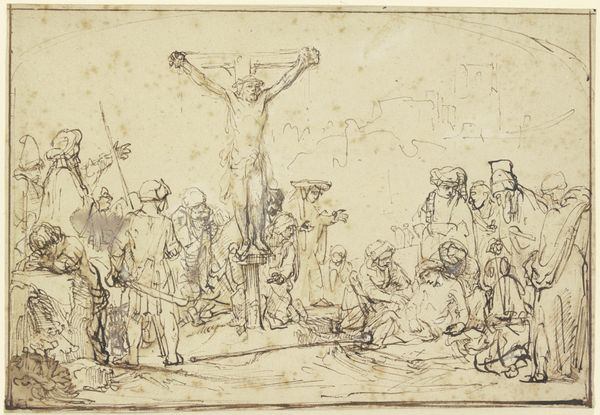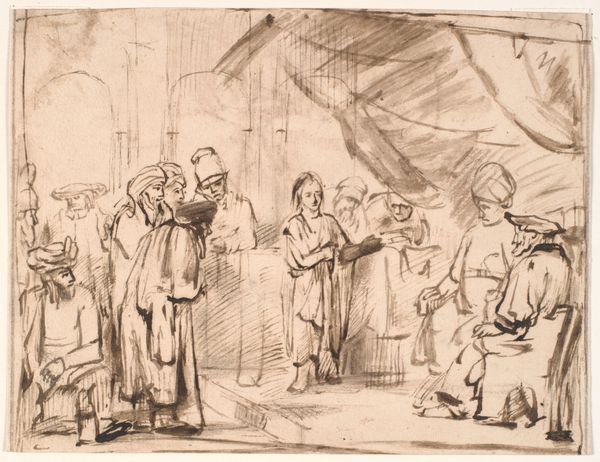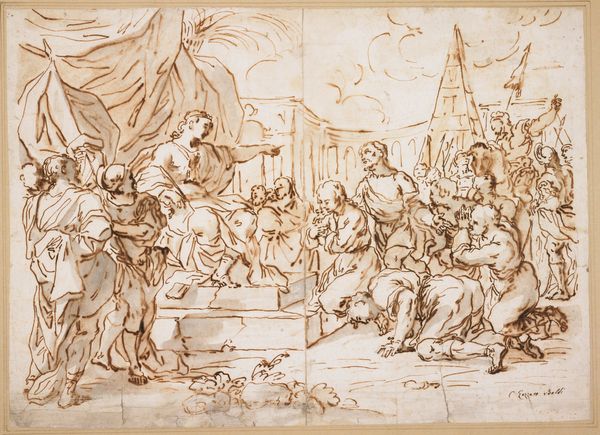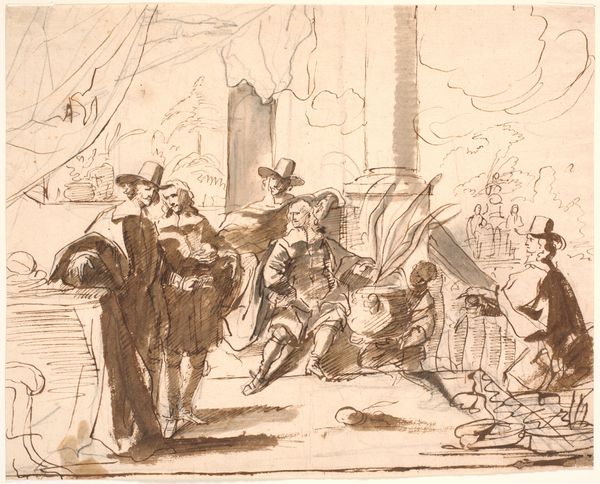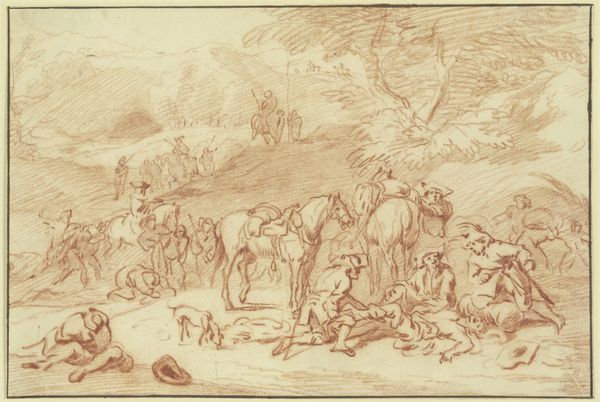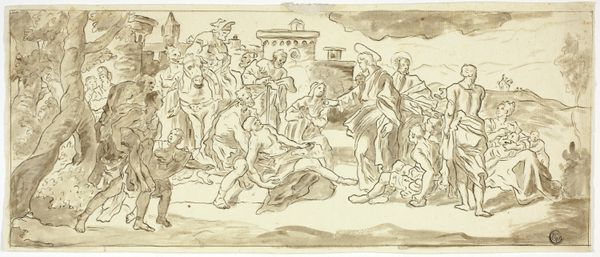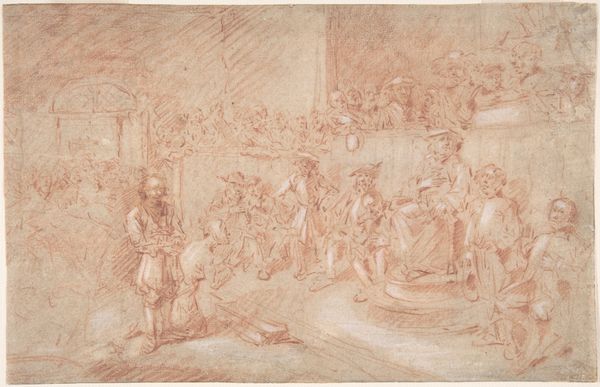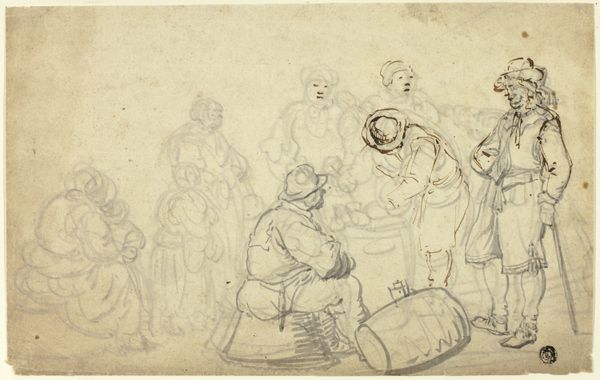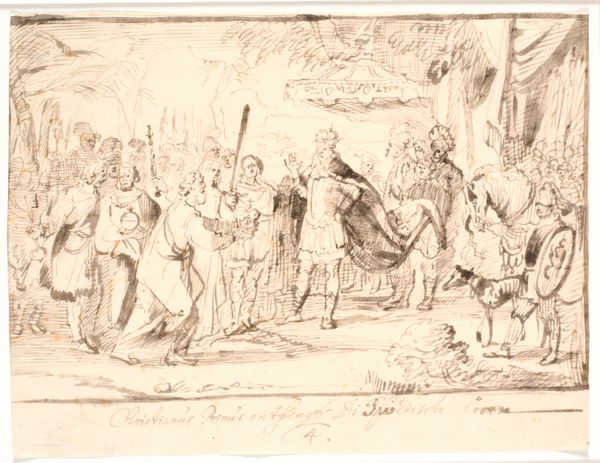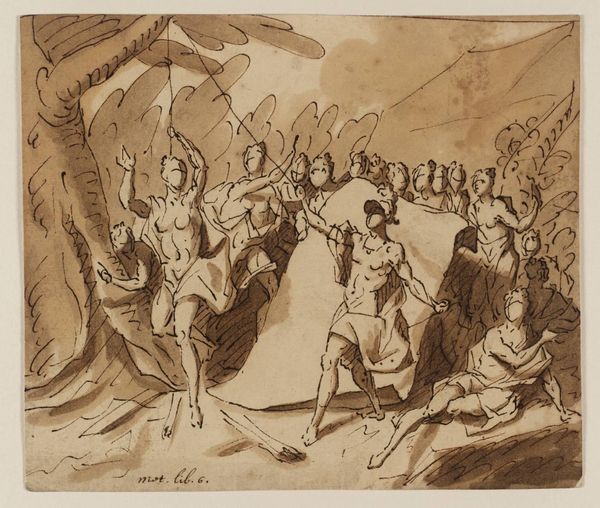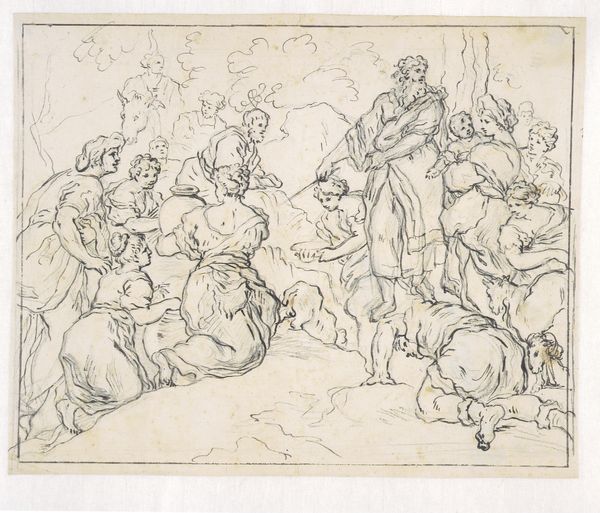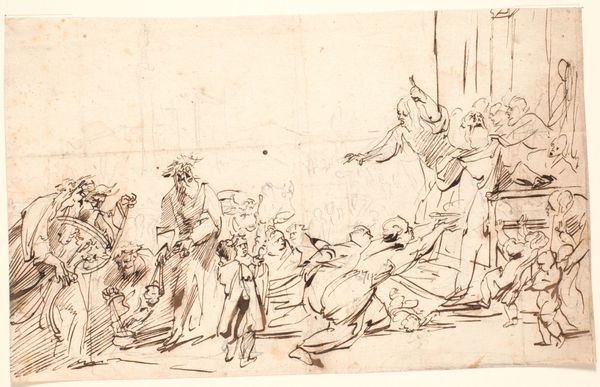
Allegorical Portrait of a Commander and His Wife 1620 - 1672
0:00
0:00
drawing, print
#
landscape illustration sketch
#
drawing
#
toned paper
#
light pencil work
# print
#
pen sketch
#
pencil sketch
#
ink drawing experimentation
#
coffee painting
#
pen-ink sketch
#
men
#
watercolour illustration
#
watercolor
Dimensions: sheet: 5 1/16 x 7 5/8 in. (12.8 x 19.4 cm)
Copyright: Public Domain
Curator: So, let's discuss Pieter Jansz’s “Allegorical Portrait of a Commander and His Wife," made sometime between 1620 and 1672, now housed at The Met. Editor: Yes! This drawing, seemingly created with pen and ink over a light pencil work, depicts what looks like a victorious couple surrounded by figures and a landscape illustration. It feels theatrical, almost like a stage design. What draws your attention to this piece? Curator: What I find compelling is not necessarily the 'who' but the 'how' and 'why' of its production. Look closely – it’s ink on toned paper, likely readily available and relatively inexpensive. This suggests a particular mode of consumption; were these prints aimed at a wider audience beyond the elite? Who was buying these and what role might it have had in shaping perception? Editor: So, you’re less concerned with the symbolic meaning of the commander and more interested in the social function of this print? Curator: Precisely! This piece operates within a specific system. The material itself – paper, ink – speaks to a developing print culture. We must also consider labor involved. Who made the paper? What were the working conditions? Examining the means of production unveils so much more than just the final image. It becomes a story about labor, commerce, and evolving artistic practices, it is a glimpse into production rather than just portraiture. Editor: That’s fascinating! I hadn't considered that the accessibility of the materials could re-frame our understanding. It really challenges the idea of art as solely high-end and more about craft. Curator: Exactly. What do we learn about artistic hierarchies of the period through studying production? This helps reveal assumptions regarding skilled "art" versus supposedly lower status practices and offers alternative means to examine art from that period. It's exciting, isn't it? Editor: Absolutely! Now, I am viewing this work with more emphasis on materiality.
Comments
No comments
Be the first to comment and join the conversation on the ultimate creative platform.
